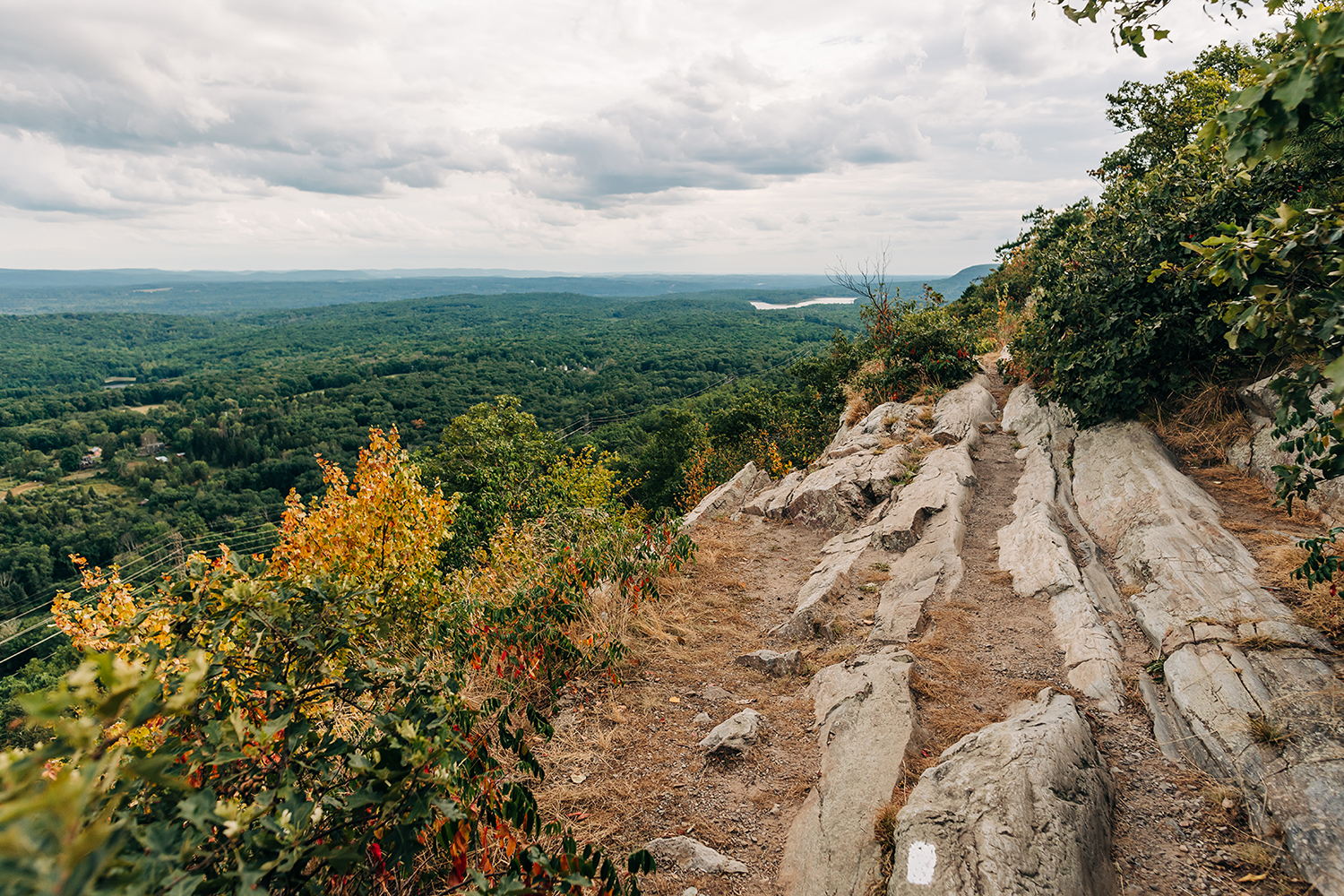
Delaware Water Gap National Recreation Area, New Jersey. – Corey David Photography
The Mid-Atlantic Highlands region encompasses 3.4 million-acres of scenic greenway, including rolling hills and green waterways, that stretch from western Connecticut, through New York and New Jersey, and across Pennsylvania. The area is brimming with parks, trails, and natural areas and it’s steeped in rich history. That history includes the long-time work of the Appalachian Mountain Club, which has been an instrumental partner in conserving land, protecting clean water, and enhancing access to outdoor recreation in the region.
“We have it all,” says Cait Handlin, trail coordinator with AMC in Pennsylvania.
“We have rivers, mountains, farmland, historic old cities.” There are also plentiful opportunities to enjoy this natural landscape, she explains. “Outdoor recreationists don’t need to go out west to get world-class experiences because our region offers just as much, including climbing, biking, paddling, and hiking.”
More than one-third of AMC members live in the Mid-Atlantic Highlands, which includes several densely populated metropolitan areas and millions of residents. At AMC, three full-time staff, plus a geographic information systems (GIS) scientist, work in close cooperation with other land conservation organizations, state and municipal agencies, the U.S. Fish and Wildlife Service, and local trail councils.
Together, AMC’s staff, volunteers, and partners are advancing trail projects, such as the Highlands Trail in Pennsylvania, and state and federal advocacy for land and water protection, including the recent re-authorization of the Highlands Conservation Act. Plus, they are engaging citizen scientists to learn more about the impacts of climate change and help inform conservation and trail planning work. Additionally, work has been ramping up recently around the federal wild and scenic designated rivers in the region, including 220 miles of the Delaware River, with AMC staff helping to connect paddlers to river conservation issues.
It’s a tight operation whose work is enhanced by the enormous membership base and thousands of volunteers, explains AMC’s director of conservation policy engagement Mark Zakutansky. “We have decades of experience being here. And we add particular value in lodging, policy, trail planning across jurisdictions, and convening partnerships.”
Here are two projects AMC staff and volunteers are working on now.
Highlands Conservation Act
AMC plays a leadership role in the Highlands Conservation Act, convening the Highland’s Coalition of approximately 200 organizations, and working in partnership with members of the House and Senate. Now that the bill has been signed, Guttman has already gotten to work on one of its programmic changes, which is to expand the boundary of townships and municipalities that are includes in the Mid-Atlantic Highlands region. The re-authorized act also revised the way conservation projects are identified, by using the best available science and geographic information system analysis.
We have decades of experience being here. And we add particular value in lodging, policy,
“We have decades of experience being here. And we add particular value in lodging, policy, trail planning across jurisdictions, and convening partnerships.” – Mark Zakutansky
AMC’s own GIS scientist, Cathy Poppenwimer, works on the cutting edge of this technology. After meeting with nearly 80 stakeholders, she is synthesizing massive amounts of information about the Highlands, adding uniformity and accuracy to GIS maps of the area. And it’s these maps that the U.S. Fish and Wildlife Service will use to determine funding and conservation priorities.
Over the history of the Highlands Conservation Act, there have been more
than 13,000 acres of land protected in the region since 2004. Of course, with these land protection projects comes expanding outdoor recreation opportunities. “Most of the land that’s being funded will be open to the public for recreation use, that’s a key part of it as well,” explains Guttman.

AMC Riga Campsite and Shelter, Connecticut – Adam Lippman, AMC Photo Contest
Trail Connectivity
The Pennsylvania Highlands Trail Network is an expansive 300 miles of multi-use trail that connects 13 communities from the Delaware River in Bucks County to the Appalachian Trail in Franklin County. The trail is still a work in progress, and AMC staff have identified seven major gaps on connectivity. AMC is working with county planning commissions and township parks and recreation officials to identify opportunities to bridge these gaps with new trails.
Handlin, AMC’s trail coordinator in Pennsylvania, is engaged in all facets. That includes working with landowners to gain access, designing and engineering, and an immense amount of volunteer work on the ground.
In Veteran’s Park, where one trail gap had existed, AMC volunteer trail crew leader Greg Bernet faced a swampy, brushy mess where a trail needed to be. With hundreds of hours of time and hard work, his crew of volunteers cut a corridor using hand tools, including loppers, hand saws, and metal-bladed trimmers. Next, the crew laid an 18- to 24-inch treadway, removing stumps and roots along the way, and added steppingstones, bridges, and bench cutting where it was needed.
The value of a trail connection in Veterans Park, says Bernet, is to connect the Highlands Trail corridor to a nearby dense population. “It’s so close to so many people,” points out Bernet.